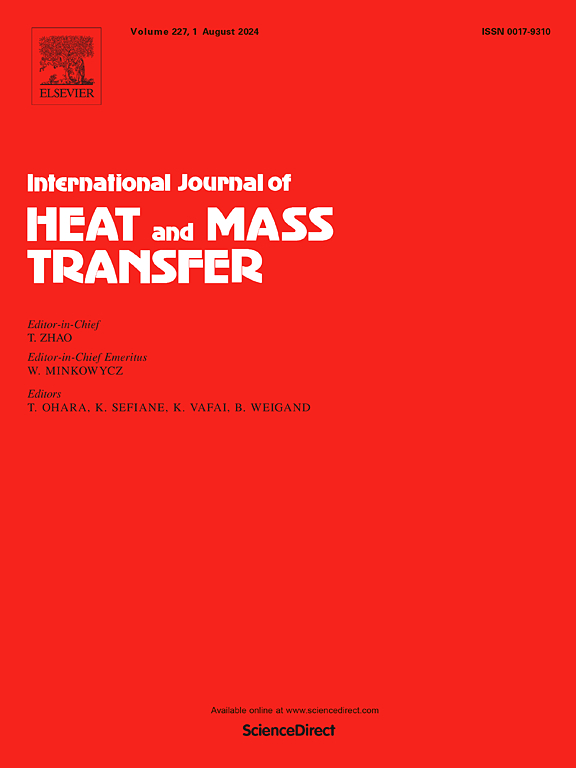Enhanced subcooled flow boiling in microchannels integrated with nanoporous graphene coatings of distinctive wettability
IF 5
2区 工程技术
Q1 ENGINEERING, MECHANICAL
International Journal of Heat and Mass Transfer
Pub Date : 2025-04-09
DOI:10.1016/j.ijheatmasstransfer.2025.127065
引用次数: 0
Abstract
Subcooled flow boiling in microchannel presents a promising solution for efficient electronics cooling. This study explores the use of graphene nanoplatelets (GNPs) as a nanoporous surface coating to leverage the ultrafast water permeation and variable wettability properties of graphene in subcooled flow boiling through microchannels. The performance of GNPs coatings is evaluated using metrics such as the Nusselt number, pumping power, flow resistance, and performance evaluation criterion. The results demonstrate that the base GNPs coating, exhibiting dual wetting characteristics due to its synergistic combination of hydrophobicity and high surface roughness, outperforms both purely superhydrophilic and superhydrophobic GNPs coatings. The base GNPs coating achieves an impressive 143% increase in the Nusselt number and reduces the surface temperature by up to 25°C. However, the enhanced boiling performance with the base GNPs comes at the expense of increased pumping power, analogous to the use of inserts in channel flow. The improved heat transfer is coupled with higher flow resistance and energy consumption, leading to a performance evaluation criterion value well below unity. This study provides interesting insights into the application of GNPs in subcooled flow boiling in microchannels to improve the efficiency of electronics cooling.
求助全文
约1分钟内获得全文
求助全文
来源期刊
CiteScore
10.30
自引率
13.50%
发文量
1319
审稿时长
41 days
期刊介绍:
International Journal of Heat and Mass Transfer is the vehicle for the exchange of basic ideas in heat and mass transfer between research workers and engineers throughout the world. It focuses on both analytical and experimental research, with an emphasis on contributions which increase the basic understanding of transfer processes and their application to engineering problems.
Topics include:
-New methods of measuring and/or correlating transport-property data
-Energy engineering
-Environmental applications of heat and/or mass transfer

 求助内容:
求助内容: 应助结果提醒方式:
应助结果提醒方式:


